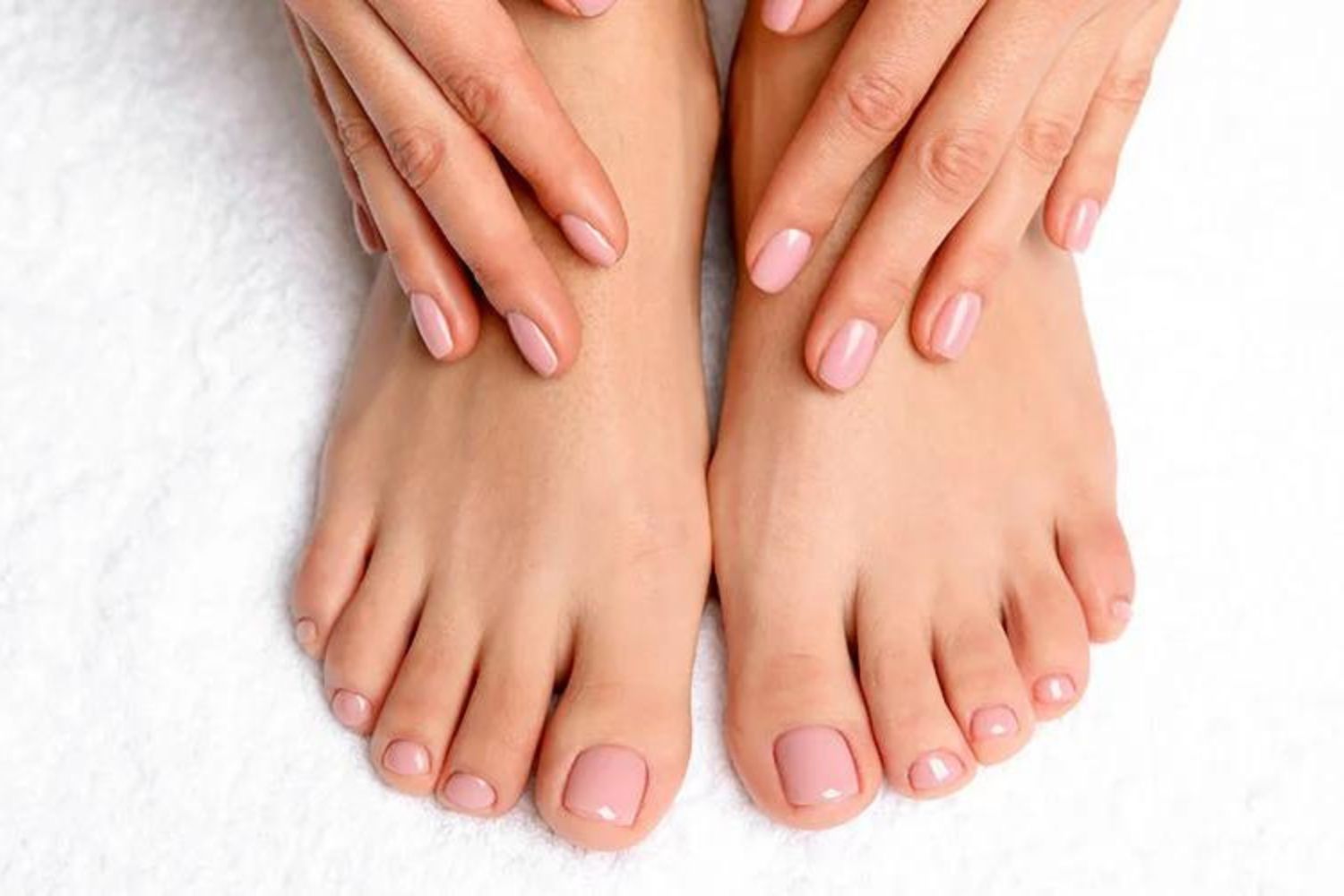
Feet are amazing appendages that we often take for granted. Not only do they allow us to walk and run, but they are also filled with fascinating facts. One particular area of intrigue is the “feet fingers” or toes as they are commonly known. These small, but crucial components of our feet are not only responsible for balance and stability but also possess their own unique attributes that make them extraordinary. From their impeccable adaptability to their role in athletic performance, the toes are truly remarkable. In this article, we will explore 20 extraordinary facts about feet fingers that will leave you in awe. So, let’s dive in and discover the fascinating world of our toes!
Key Takeaways:
- Feet fingers, or toes, are crucial for balance, posture, and mobility. They have unique prints like fingerprints and play a role in cultural practices.
- Proper footwear and care are essential for healthy feet fingers. They have their own strength and flexibility, contributing to our overall well-being.
The human foot is made up of 26 bones.
Feet fingers, also known as toes, are an integral part of the human foot. Each foot contains 14 phalanges, or bones, which make up the toes.
The big toe is the most important toe for balance.
Among the toes, the big toe plays a crucial role in maintaining balance and providing stability during activities like walking, running, and standing.
The average person takes around 8,000 to 10,000 steps per day.
Feet fingers are constantly in motion, enabling us to move around effortlessly. On average, a person takes thousands of steps daily, putting pressure on the toes.
The longest toe is often the second toe.
While the big toe is generally the largest, the second toe often surpasses it in length for many individuals, adding uniqueness to each person’s foot structure.
There are various cultural practices surrounding feet fingers.
In some cultures, feet fingers are adorned with jewelry, painted with henna, or even considered symbols of good luck or beauty.
Feet fingers play a crucial role in maintaining posture.
Proper alignment and strength in the feet fingers contribute to overall posture and help distribute weight evenly throughout the body.
Flat feet can affect the functioning of feet fingers.
Individuals with flat feet may experience difficulties in properly flexing and using their toes due to the lack of arch support.
Feet fingers have a high concentration of nerve endings.
The toes are highly sensitive, thanks to the numerous nerve endings present in this area. This sensitivity helps us maintain balance and avoid potential hazards.
The medical term for a crooked or bent toe is ‘hammer toe’.
A hammer toe occurs when one or more toes become bent or crooked, causing discomfort and sometimes requiring medical intervention to correct.
Feet fingers have unique prints, similar to fingerprints.
Just like fingerprints, each person has distinctive toe prints. This makes them potentially useful for identification purposes in forensic investigations.
Feet fingers can be affected by conditions like bunions.
Bunions are bony bumps that form at the base of the big toe. They can cause pain and affect the alignment of the toes.
Proper footwear is essential for the health of feet fingers.
Wearing well-fitting shoes that provide adequate support and cushioning can help prevent foot problems and ensure the toes are comfortable and protected.
The flexibility of feet fingers decreases with age.
As we grow older, the tendons and ligaments in our feet fingers become less flexible, which can affect mobility and dexterity.
The art of foot massage focuses on stimulating feet fingers.
Foot massages target specific points on the feet to promote relaxation, relieve tension, and improve circulation in the toes.
Certain medical conditions can cause numbness or tingling in the feet fingers.
Nerve-related conditions like peripheral neuropathy can lead to sensations of numbness, tingling, or even loss of sensation in the toes.
The average foot contains around 250,000 sweat glands.
Sweating is a natural process that helps regulate body temperature. Feet fingers contribute to this, releasing sweat to cool down the feet.
Feet fingers can be affected by fungal infections.
Conditions such as athlete’s foot can cause itching, redness, and discomfort in the toes. Good hygiene and proper care help prevent and treat such infections.
Some people can move their feet fingers independently.
While most individuals have limited control over individual toe movement, some people possess the ability to move their toes independently from one another.
Feet fingers play a role in proprioception.
Proprioception is our body’s ability to sense its position in space. The toes contribute to this, helping us understand the position and movement of our feet.
Feet fingers have their own strength and flexibility.
Although often overshadowed by the larger muscles of the legs and ankles, the toes have their own strength and flexibility, allowing for intricate movements and gripping.
Feet fingers are remarkable appendages that are essential for our mobility, balance, and overall well-being. From their unique prints to their involvement in various cultural practices, these extraordinary facts about feet fingers demonstrate the importance of these often underappreciated body parts.
So the next time you take a step or wiggle your toes, remember to appreciate the incredible capabilities of your feet fingers!
Conclusion
After exploring these extraordinary facts about feet fingers, it is clear that these small body parts hold a significant role in our daily lives. From their intricate structure to their sensory capabilities, feet fingers are truly fascinating. They provide balance, support, and the ability to perform various activities, making them indispensable.Understanding the anatomy and functions of feet fingers can also help us take better care of our feet. By keeping them clean, wearing appropriate footwear, and engaging in exercises that promote foot health, we can ensure the longevity and well-being of these remarkable appendages.So, the next time you wiggle your toes or take a step, remember the amazing feats your feet fingers accomplish every single day!
FAQs
Q: How many feet fingers do humans have?
A: Humans typically have five feet fingers on each foot, making a total of ten. These include the big toe, which is the largest and the most important for balance, and the four smaller toes.
Q: Why do we have feet fingers?
A: Feet fingers are essential for maintaining balance and stability while standing, walking, and running. They also provide grip and dexterity, allowing us to grab objects or navigate different surfaces.
Q: Can feet fingers feel pain?
A: Yes, feet fingers have a high concentration of nerve endings, which makes them sensitive to touch and pain. They can experience discomfort from injuries, such as stubbing, crushing, or spraining.
Q: Are all feet fingers the same length?
A: No, each foot finger has a different length, with the big toe being the longest and the smallest toe being the shortest. This variation in length allows for better weight distribution and stability.
Q: Can feet fingers be individually controlled?
A: While we have some control over our feet fingers, they are primarily controlled by tendons and muscles in the foot. However, with practice and training, certain individuals can develop the ability to wiggle or move their toes independently.
Q: Can you lose a feet finger?
A: Yes, in cases of accidents or medical conditions, it is possible to lose a feet finger through amputation. However, advancements in medical technology have also made it possible to replace a lost finger with prosthetics.
Was this page helpful?
Our commitment to delivering trustworthy and engaging content is at the heart of what we do. Each fact on our site is contributed by real users like you, bringing a wealth of diverse insights and information. To ensure the highest standards of accuracy and reliability, our dedicated editors meticulously review each submission. This process guarantees that the facts we share are not only fascinating but also credible. Trust in our commitment to quality and authenticity as you explore and learn with us.


